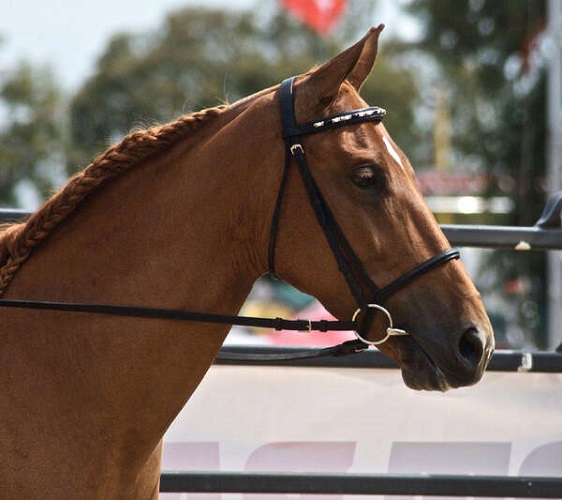Horse halters are often mistaken for bridles. The main difference between a halter and a bridle is that a ground handler uses a halter to lead or tie up an animal. In contrast, a bridle is operated by a person riding or driving an animal that has been trained for this purpose. For tying, a halter is preferable to a harness because the bit of a bridle may hurt the horse's mouth if the horse backs up when tied with a harness, and since many reins are made of lighter materials, so will break. A harness, on the other hand, allows for more accurate control.
A halter is one of the essential items to have while owning a horse. Halters can be used for making a fashion statement, identifying your horse in an emergency, training your horse, avoiding risky situations, and being an essential element of showing success. It is sometimes the only thing that comes with a new horse when you buy him. A monogrammed halter is probably the first item a new horse owner goes for to commemorate their ownership. To properly school and display, trainers rely on the performance of their ropes. We'll go over several types of halters, their applications, and how to pick the right one for your horse in this post.
Although all halters serve the same primary function - to control horses' movements during handling, not all halters are equal in their ability to meet all control requirements. Not every halter will suit your management style and handling philosophy, just as not every halter will precisely fit your horse's head. As the halter is likely to be the most used piece of equipment in your barn, you'll want one that makes daily interactions with your horse easier.
The safety and comfort of your horse are the most important factors to consider when choosing a halter. Your expectations for control and ease narrow the field, and the final decision in headgear is determined by appearance and cost. The following questions highlight the factors to consider while choosing a suitable halter: quality and price.
Safety and Security issues
When it comes to tying, it's disputed whether a halter should be designed strong enough to not break under stress or if it should give way when strain reaches a particular threshold to protect the animal. If a bound animal is attended to and the lead rope is fastened with a slip knot that can be swiftly loosened if the animal panics, the issue is usually of minor consequence. An animal panicked and attempting to escape can be severely wounded if a non-slip knot is secured, if a soft rope is drawn tight, the knot cannot be undone, or if the animal is left unsupervised.
Breakaway features, such as a leather crownpiece, breakaway buckles, or readily removable lead rope, are recommended by those who think that the risk of injury is more of a concern than the risk of escape. Those who believe that flight poses the greater risk, either because of fears of escape or because of the risk of instilling a recurring lousy habit in an animal that learns to break loose and becomes unable to be tied at all, we recommend sturdy designs that will not break unless the handler intentionally releases a slipknot or cuts the lead rope.
Those who propose durable halters will not break under regular pressure from a resistant or terrified animal but will eventually die in an actual panic situation, such as a fall. Even when stopped or turned out, some users insist on the animal wearing a halter at all times. Others only use a halter when the animal is led, held, or tied. Leaving a halter on has the advantage of making the animal easier to catch. The downsides include the possibility that an animal will snag the halter on an object and become imprisoned or wounded. While experts encourage leaving halters off when animals are turned out, breakaway designs that still hold for everyday guiding are recommended if halters are left on unattended animals.













